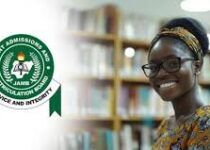WAEC Music Syllabus 2026/2027 & Textbooks
The WAEC Music Syllabus 2026/2027 & Textbooks: candidates should prepare for three papers: Paper 1 (theory and aural skills), Paper 2 (practical performance, sight-reading, and interpretation), and Paper 3 (a written paper on music history, analysis, and essays). The final syllabus will be released by WAEC and serves as the definitive guide for preparation.
This syllabus is designed for students who have a strong passion for music and wish to include it as one of their subjects in the JAMB (UTME) examination. Selecting music as part of your UTME subject combination typically indicates an interest in pursuing a degree in Music, Arts, or related disciplines at a higher institution.
The syllabus covers a wide range of topics essential for understanding and appreciating music. Students are expected to be familiar with musical notation, scales, harmony, rhythm, form, and different musical genres.
The exam will test knowledge of the historical development of music, influential composers, musical styles, and how culture has shaped music across different periods and regions. By studying the syllabus thoroughly, candidates can build a strong foundation that increases their confidence and likelihood of success in the exam.
Regarding the marking guide, the JAMB examination consists of a total of 180 questions. The Use of English section contains 60 questions, while each of the remaining three subjects has 40 questions.
Every subject apart from English is scored at 2.5 marks per question. For instance, scoring 30 out of 60 in Use of English gives 50%, while getting 28 out of 40 in Music results in 70% (28 × 2.5). Similarly, if a student scores 30 out of 40 in Fine Art and Government, each would yield 75%. Adding these results—50 + 70 + 75 + 75—gives a total score of 270 out of 400.
Objective
The aim of the Unified Tertiary Matriculation Examination (UTME) syllabus in Music is to prepare the candidates for the Board’s examination. It is designed to test their achievement of the course objectives, which are to:
- Candidates Must appreciate and discuss music fairly and critically;
- Candidates Must identify, through written/oral analysis, the features of the music of different periods of Western and African music theory history, peoples, its forms, and the media;
- Candidates Must appreciate the influence of socio-cultural and technological factors on the lives and music of musicians.
WAEC Music Syllabus 2026/2027
| JAMB MUSIC SYLLABUS | ||
| SN | TOPICS | OBJECTIVES |
| 1 | RUDIMENTS OF MUSIC | |
1.The staff: (a) great staff, (b) ledger lines and spaces, (c) open score (vocal score)and (d) C clef, alto (viola clef), and tenor clef. 2. Music Notes/Rests and their corresponding values. 3. Time/Time signature:(simple and compound time signatures), the correct grouping of notes, and barring of unbarred passages. 4. A–Key signatures and scales: (i) technical names of the various degrees of the scale (ii) diatonic major/minor (natural, harmonic, and melodic) (iii) chromatic scales. (iv) Determination of the key of a piece of music with or without key signature NOT exceeding two sharps and two flats. 5. (a) Keyboard setting and enharmonic equivalents (b) Accidentals 6. Intervals: 6a. Recognition of diatonic/ chromatic intervals and their inversions (e.g. perfect unison, perfect 4th, perfect 5th, perfect 8ve), major/minor 2nd, 3rd, 6th, and 7th, diminished 5th, and augmented 4th 6b. Recognition of consonant and dissonant intervals. 7. Definition of simple musical terms, signs, and abbreviations 8. (a) Transcription of music from staff into tonic solfa notation and vice-versa. (b) Transposition using the treble (G) and bass (F) staves NOT exceeding two sharps and two flats | Candidates should be able to identify all the components of the staff and their application. Candidates should be able to determine the relative duration of different notes and rests Candidates should be able to interpret varied rhythmic patterns Candidates should be able to: i. ascertain names of the various degrees of the diatonic scales. ii. identify simple scale passages with or without key signature. Candidates should be able to identify the names of the white and black keys and their relationship, e.g. (C sharp = D\(^b\) = B\(^x\)) Candidates should be able to determine different qualities of intervals (melodic and harmonic) Candidates should be able to interpret simple musical signs and terms. Candidates should be able to: i.read music in any given notation. ii. rewrite a music passage on a given stave | |
| 2 | ELEMENTARY HARMONY | |
| 1.Triads and their inversions in major/minor keys, NOT exceeding two sharps and two flats. (a) Primary triads in major keys. (b) Secondary triads in major keys. NOTE A: CHORD INDICATIONS (i) major triads are indicated with capital Roman numerals e.g. I (ii) minor triads are indicated with small Roman numerals e.g. ii (iii) diminished triads are indicated with small Roman numerals with a “o” sign, e.g.vii\(^o\) (iv) augmented triads are indicated with capital numerals with a “+”, e.g III\(^+\) NOTE B:(I) In any major scale, major triads are I, IV and V (ii) minor triads are ii, iii and vi (iii) diminished triad is vii\(^o\) NOTE C: (i) In any harmonic minor, minor triads are i and iv (ii) major triads are V and VI (iii) diminished triads are ii\(^o\) and vii\(^o\) (vi) augmented triad is III\(^+\) NOTE D: Primary triads are I, IV and V in major scales but i, iv, and V in harmonic minor scales 2.(a) Basic chord progressions in four parts vocal style (SATB) in major keys NOT exceeding two sharps and two flats. (b) Dominant 7th chord in root position only 3. Kinds of motion; Parallel, similar, contrary and oblique. 4.Cadences in major keys NOT exceeding two sharps and two flats. (a) perfect/ full close cadence (b) imperfect/ half close/ semi cadence. (c) plagal/Amen cadence (d) interrupted / deceptive / evaded / surprise cadence 5.Non-harmonic tones/Non-chord tones; identification and application of the following: (a) neighboring tones/auxiliary notes (b) passing tones/notes 6.MODULATION: Simple diatonic modulations (using a single melodic line) from any given major key NOT exceeding two sharps and two flats to any of its closely related keys (dominant and subdominant). 7.Elementary Composition: (a) Setting of words to written melody: (b) Recognition of suitable answers to given musical phrases | Candidates should be able to: i.identify triads; ii. compare types of triads; iii. determine the use of triads. Candidates should be able to: i. determine the basic chord progressions in a music passage. ii. recognize the dominant 7th chord Candidates should be able to identify the various kinds of motion in a musical passage Candidates should be able to identify the various types of cadences in a musical score. Candidates should be able to relate harmonic or non-harmonic tones to the chords with which they are associated. Candidates should be able to determine the key of a given melody and its modulation. Candidates should be able to identify suitable melody to given words, compatible and balanced (parallel or contrasting) phrases | |
| 3 | HISTORY AND LITERATURE OF AFRICAN MUSIC | |
| 1.Nigerian folksongs, types, forms, and characteristics. (a) Types: cradle, folk-tales, games, war, satirical, dirges/funeral, historical, praise and worksong,etc. (b) Forms: call and response, strophic, through –composed, etc. (c) Characteristics: (i) Vocal styles: recitative, yodeling, ululation, incantation, heaving, whistling, etc. (ii) Scales/modes: tritonic, tetratonic, pentatonic, hexatonic etc, (iii) Metre/Rhythm: Metric and non-metric, polymetric, cross-rhythm, syncopation, hemiola, polyrhythm, etc 2.General knowledge of the features and forms of Nigerian traditional music and other arts. (i) Festivals: e.g. Osun, Ifa, Ogun, Ekpo, Ofala, Iri-ji (New Yam Festival), Ovia Osese, Mmanwu (Masquerade), Ila-Oso, Argungu (Fishing), Eyo/Adamu –Orisa, Gelede, etc. (ii) Dancesand other arts: Social, Ritual and Ceremonial e.g. Masquerade, Koroso, Atilogwu, Ikperikpe (Wardance), Egedeege, Kwaghir, Agbon, Nkwa Umuagbogho, Bata, Bori, Swange, Dundun, Kokoma, Abigbo, Okonko, etc 3.INSTRUMENTS: Nigerian traditional musical instruments: CLASSIFICATIONS: (a) Aerophones: (i) kakaki, algaita, sarewa, pedete, obati, farai, kaho, imar, mongom, taluk, damalgo, etc. (ii) oja, opi, pipilo, odu, nnuk,ofiom, akpele, etc. (iii) ekutu, teremagbe, ayeta-ode, odikakora, etc. (b) Chordophones: (i) goge, kukuma, komo, kwamsa, kuntigi, lasha, molo, garaya, gurmi, etc. (ii) une, ubo-akwara, etc. (iii) goje, molo, etc (c) Idiophones: (i) kundung, karawa, shantu, etc. (ii) oyo, ichaka, ogene, aja, ekpili, ekwe, udu, ikoro, ngedegwu, okpokoro, ekere, mgbiligba, alo, ubo-aka, etc. (iii) sekere, agogo, agidigbo, alọ, oma, aro, ukuse, eromwon, etc (d) Membranophones: (i) ganga, tambari, taushi, banga, balle, kuntuku, kalangu, gangan-noma, tandu, etc. (ii) igba, nsing, ban yogume, emoba, etc. (iii) ipese, igbin, bata, bembe, gudugudu, kanango, dundun, agidigbo, gangan, etc 4.Knowledge of the lives and music of the following African traditional musicians: A. NIGERIANS (i) Sani Sabulu, Sani Dan Indo, Hassan Wayam, Barmani Coge, Danlami Nasarawa, Garba Super, Dankwairo, Aminu mai Asharalle, Shehu Ajilo, Dan Maraya Jos, Dan Alalo, Mamman Shata, Haruna Uje, etc. (ii) Ezigbo Obiligbo, Seven-Seven, Morocco Maduka, Okechukwu Nwatu, Mike Ejeagha, Afam Ogbuotobo etc. (iii) Kokoro, (the blind Minstrel), Anikura, Tunde Alao,Olanrewaju Adepoju, Ademola Onibon-okuta, Elemure Ogunyemi, Comfort Omoge etc B. OTHER AFRICANS Vinoko Akpalu, Daniel Amponsah (alias koo Nimo), EfuaBasa, Kwaa Mensah etc. 5.Evolution and Development of African Popular Music Highlife, Afro-beat, Fuji, Apala, Reggae, Makosa, Ikwokirikwo, Okukuseku, Ekassa, Akuko na egwu, Awurebe, Waka, Hiplife, Hip-hop, Juju etc. 6.Knowledge of the lives and music of the following African Popular Musicians: A. NIGERIANS: Bongos Ikwe, Oliver De Coque, Nelly Uchendu, Osita Osadebe, Bright Chimezie, Bobby Benson, Victor Uwaifo, Sonny Okosun, Fela Anikulapo Kuti, I. K. Dairo, Victor Olaiya, Ebenezer Obey, Sunny Ade, Fatai Rolling Dollar, Bala Miller, Alhaji Uba Rawa, Zaaki Adzee, 2Face, PSquare, Djnee, Paul Play Dairo, Eedris Abdulkareem, D’Banj, SunnyNeji, Lagbaja, Zule Zoo, Daddy Showkey, Majek Fashek, Ras Kimono, Jeremiah Gyang,Flavour, Olamide, M.I, Iyanya, Wizkid,Davido, Omawunmi, Lara George, Sola Allynson, Ara, Asa, Onyeka Onwenu, Christy Essien-Igbokwe, Nasir Hausawa etc B. OTHER AFRICANS: Manu Dibango, E. T. Mensah, Jerry Hansen, Kofi Olomide, Awilo Logomba, Papa Wemba, Salif Kaita, Angelina Kidjo, Lucky Dube, Yvonne Chakachaka, Brenda Fasie,Sarkodieetc. 7. Knowledge of the lives and music of the following African Art Musicians: A. NIGERIANS: W. W. C. Echezona, Laz Ekwueme, Sam Akpabot, Ikoli Harcourt Whyte, Joshua Uzoigwe, Mosun Omibiyi-Obidike, Tunji Vidal, Ademola Adegbite, Yemi Olaniyan, Ayo Bankole, Akin Euba, Sam Ojukwu, A. K. Achinivu, Bode Omojola, Felix Nwuba, ChristopherOyesiku, Dayo Dedeke, Adams Fiberesima, Dan Agu, Chris Onyeji, Godwin Sadoh, Meki Nzewi, etc. B. OTHER AFRICANS: Joseph S. Maison, N. Z. Nayo, J. H. Kwabena Nketia, GymahLabi,Philip Gbeho, Ephraim Amu, C.K. Adom, A.A. Mensah, C.W.K. Mereku, etc. | Candidates should be able to: i. identify various folksongs and their types; ii. define and compare their forms and features Candidates should be able to: i.analyse the features and forms of Nigerian traditional music and the arts; ii. differentiate between the various types of festivals and dances Candidates should be able to: i.differentiate between the various types and classes of musical instruments; ii. classify them into their categories Candidates should be able to: i.identify different groups to which various musicians belong; ii. trace their biographies; iii. analyze their musical styles; iv. assess their contributions to the music industry. Candidates should be able to: i.differentiate one musical genre from another; ii. examine their influence on society Candidates should be able to: i.relate the musicians to the music they perform; ii. trace their biographies iii. examine their type of music; iv. assess their contributions to the development of music. Candidates should be able to: i.relate the musicians to the music they perform: ii. trace their biographies; iii. examine their type of music; iv. assess their contributions to the development of music | |
| 4 | HISTORY AND LITERATURE OF WESTERN MUSIC | |
| 1.(A) Historical development of Western music styles in respect of the periods (i) Medieval/Middle Age (800 –1400). (ii) Renaissance period (1400 –1600). (iii) Baroque period (1600 –1750). (iv) Classical period (1750 –1820). (v) Romantic period (1820 –1900). B.COMPOSERS Palestrina, Claudio Monteverdi, Henry Purcell, J.S. Bach, G. F. Handel, W. A. Mozart, FranzJoseph Haydn, Ludwig van Beethoven, Franz Schubert, Frederic Chopin, etc. 2.MUSIC FORMS AND MEDIA: (i) Binary, Ternary, Rondo, SonataAllegro, Dance Suite, Canon, Free Fantasia, Theme and variation, etc. (ii) Orchestral and Band instruments and classifications (iii) The human voice (its types, ranges and qualities) (iv) Keyboard Instruments–the organ, piano and electronic keyboard, e.t.c. (v) Knowledge of the following instruments: ukulele,banjo, guitar, mandolin, harp, accordion, xylophone, marimba, etc. (vi) Computer Music Technology: software (Finale, Sibelius,Cubase, Reason,Sound Forge Nero), tuning fork, pitch pipe etc | Candidates should be able to trace the stages of the development of western musical practice from the medieval to the end of the romantic period. Candidates should be able to: i.identify the composers; ii.assess their contributions. Candidates should be able to: i. identify the general forms and various types of instruments in Western music. ii. relate music to modern technology | |
| 5 | COMPARATIVE MUSIC STUDIES | |
| 1.An overview of the following black musicians (composers, performers, etc) in the diaspora. Mighty Sparrow, James Brown, Bob Marley, Michael Jackson, Stevie Wonder, Lionel Richie, R. Kelly, Lorrinan Hill, Kirk Franklin, Tupac Shakur, Shabba Ranks, Quincy Jones, Boyz II Men, Sean Paul, Janet Jackson, Whitney Houston, Beyonce,Brandy, Usher, Kevin Lyttle, Bobby Brown, M. C. Hammer, L. L. Cool J., Dr. Dre, Snoop Doggy, Mary J. Blige, Jay Z, Chris Brown, Bruno Mars, Neo, Rihanna etc. 2. Forms to be examined include negro spiritual, gospel music, jazz, rhythm and blues, soul, calypso, rock ‘n’ roll, reggae, afro-beat, tango, rap, chachacha, bolero, twist, hip-hop, etc. 3.The spirit of nationalism in Nigerian music. | Candidates should be able to: i. identify the musicians in the diaspora; ii. assess their musical influence on the global society. Candidates should be able to: i.identify the various forms of musical genres; ii. trace the origins of the musical genres. Candidates should be able to: i. identify some of the features and materials used by nationalist composers to create, project and sustain cultural and patriotic awareness; ii. assess their roles in Nigerian nationalism. |
WAEC Music Textbooks 2026/2027
- Akpabot, S. E. (1986).Foundation of Nigerian Traditional Music, Ibadan: Spectrum.
- Associated Board of the Royal School of Music (1958).Rudiments and Theory of Music,London.
- Cole, W. (1969).The Form of Music, London: The Associated Board of the Royal Schools Of Music.
- Echezona, W. W. C. (1981). Nigerian Musical Instruments, Enugu: Apollo Publishing Ltd.
- Ekwueme, L. (1993).Choir Training and Choral Conducting for Africans, Lagos: Lenaus Advertising and Publishing Company.
- Holst, I. (1963).An ABC of Music, Oxford: Oxford University Press.
- Hosier, (1961).Instruments of the Orchestra Oxford: Oxford University Press.
- Hunt, R. (1960).Elements of Music.
- Inanga, A. (1993).Music for Secondary Schools Vols. I and II, Ibadan: Spectrum
- Kamien, R. (1990). Music: An Appreciation,London: McGraw –Hill Publishing Company.
- Kennedy, M. (1985).The Concise Oxford Dictionary of Music, (Third Edition), London: Oxford University Press.
- Kitson, C. H. (1978).Elementary Harmony Book 2,London: Oxford University Press.
- Kofoworola, Z. O. And Lateef, Y. (1987). Hausa performing Arts and Music,Lagos:Nigeria Magazine.
- Lovelock, W. (1953).A Concise History of Music,London: Bell and Hyman.
- Lovelock, W.(1996).The Rudiments of Music, London. G. Bell and sons Limited.
- Machlis, J. (1977). The Enjoyment of Music,New York: W.W. Norton.
- Mensah, A. A. (Undated) Folk Songs for Schools, Accra.
- Morris, R. O. (1974).The Oxford Harmony, Vol. I, London: Oxford University Press.
- Nketia, J. H. (1974).African Music,New York: W. W. Norton Company.
- Palmer, K. (1965).Teach Yourself Music, London: The English University Press Limited.
- Reed, H. O. (1954).Basic Music: A Basic Theory Test, New York:, N. Y. Mills Music Inc.
- Taylor, E. (1989).The Guide to Music Theory,London: The Associated Board of The Royal School of Music.
- Warburton, A.O. (1955).Graded Music Course for Schools, Books I –III, London: Longman
Recent Posts
- WAEC Animal Husbandry Syllabus 2026/2027 & Textbooks
- WAEC Yoruba Syllabus 2026/2027 & Textbooks
- WAEC Book-Keeping Syllabus 2026/2027 & Textbooks
- WAEC Marketing Syllabus 2026/2027 & Textbooks
- WAEC Chemistry Syllabus 2026/2027 & Texbooks
- WAEC Arabic Syllabus 2026/2027 & Textbooks
- WAEC Syllabus For Economics 2026/2027 & Textbooks
- WAEC Literature-in-English Syllabus 2026/2027 & Textbooks
- WAEC Igbo Syllabus 2026/2027 & Textbooks
- WAEC Islamic Religious Studies (IRS) Syllabus 2026/2027
- WAEC Government Syllabus 2026/2027 and Textbooks
- WAEC Arabic Syllabus 2026/2027 & Textbooks


